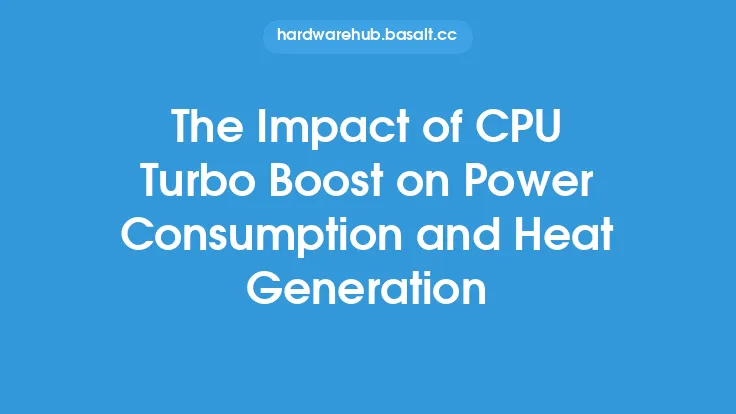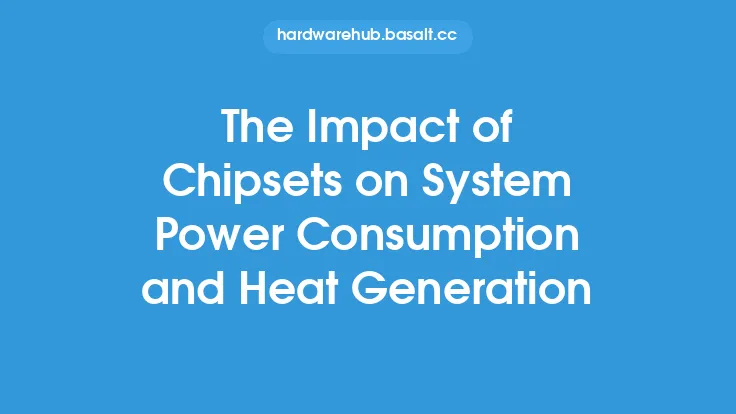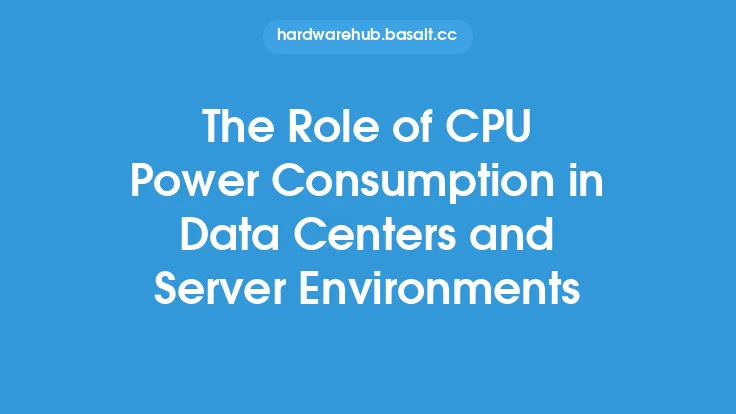The central processing unit (CPU) is a critical component of modern computing devices, responsible for executing instructions and handling tasks. However, the CPU's power consumption has a significant impact on the overall performance and functionality of the device, particularly in terms of battery life and heat generation. In this article, we will delve into the relationship between CPU power consumption, battery life, and heat generation, exploring the underlying factors and technical aspects that influence these interactions.
Introduction to CPU Power Consumption
CPU power consumption refers to the amount of electrical power required to operate the CPU. This power is typically measured in watts (W) or milliwatts (mW). The CPU's power consumption is influenced by various factors, including the type of processor, clock speed, voltage, and workload. Modern CPUs are designed to optimize power consumption while maintaining performance, but there is always a trade-off between these two factors. As CPUs become more powerful and feature-rich, their power consumption tends to increase, which can have significant implications for battery life and heat generation.
The Relationship Between CPU Power Consumption and Battery Life
Battery life is a critical concern for mobile devices, such as laptops, smartphones, and tablets. The CPU's power consumption plays a significant role in determining the device's battery life. When the CPU consumes more power, it drains the battery faster, reducing the overall battery life. This is because the battery has a limited capacity to store energy, and the CPU's power consumption is a significant contributor to the device's overall power draw. To mitigate this issue, manufacturers often implement power-saving techniques, such as dynamic voltage and frequency scaling (DVFS), which adjust the CPU's voltage and clock speed to reduce power consumption when the device is idle or under light load.
Heat Generation and CPU Power Consumption
Heat generation is another critical concern related to CPU power consumption. As the CPU consumes more power, it generates more heat, which can lead to thermal throttling, reduced performance, and even damage to the device. The CPU's heat generation is influenced by the type of processor, clock speed, and voltage. Modern CPUs are designed to operate within a specific temperature range, typically between 50°C to 90°C. When the CPU exceeds this temperature range, it can lead to reduced performance, errors, and even system crashes. To mitigate heat generation, manufacturers often implement cooling systems, such as heat sinks, fans, and liquid cooling, to dissipate heat away from the CPU.
Technical Aspects of CPU Power Consumption
From a technical perspective, CPU power consumption is influenced by various factors, including the CPU's architecture, manufacturing process, and design. Modern CPUs are designed using complementary metal-oxide-semiconductor (CMOS) technology, which provides a good balance between power consumption and performance. The CPU's power consumption is also influenced by the type of instructions being executed, with some instructions requiring more power than others. Additionally, the CPU's clock speed and voltage play a significant role in determining power consumption, with higher clock speeds and voltages resulting in increased power consumption.
CPU Power Consumption and Device Design
Device design also plays a critical role in determining CPU power consumption and its impact on battery life and heat generation. Manufacturers often design devices with power consumption in mind, using techniques such as power gating, clock gating, and voltage scaling to reduce power consumption. The device's form factor, thermal design, and cooling system also influence CPU power consumption, with smaller form factors and more efficient cooling systems helping to reduce heat generation and improve battery life.
Conclusion
In conclusion, CPU power consumption has a significant impact on battery life and heat generation in modern computing devices. The CPU's power consumption is influenced by various factors, including the type of processor, clock speed, voltage, and workload. Manufacturers often implement power-saving techniques and cooling systems to mitigate the effects of CPU power consumption, but there is always a trade-off between power consumption and performance. As CPUs continue to evolve and become more powerful, it is essential to understand the relationship between CPU power consumption, battery life, and heat generation to design and develop devices that balance performance and power efficiency. By optimizing CPU power consumption, manufacturers can create devices that provide longer battery life, reduced heat generation, and improved overall performance.





